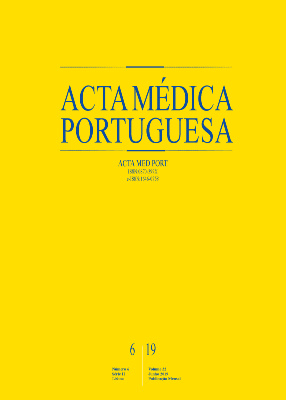Portal Venous Pressure Variation during Hepatectomy: A Prospective Study
DOI:
https://doi.org/10.20344/amp.10892Keywords:
epatectomy, Portal Pressure, Portal VeinAbstract
Introduction: Excessive portal venous pressure in the liver remnant is an independent factor in the occurrence of posthepatectomy liver failure and small-for-size syndrome. The baseline portal pressure prior to hepatectomy was not considered previously. The aim of this study is to assess the impact of portal pressure change during hepatectomy on the patient outcome.
Material and Methods: Prospective observational study including 30 patients subjected to intraoperative measurement of portal pressure before and after hepatectomy. This variation was related to the patient outcome. Control group evaluation was assessed. Patient, disease and procedure features were considered. The optimal cut-off of portal pressure variation was determined. Linear regression or logistic regression was applied to identify predictors of the outcome.
Results: The univariate analysis showed that portal pressure increase after hepatectomy was associated with coagulation impairment in the first 30 postoperative days (p < 0.05), and with the occurrence of major complications (p = 0.01), namely hepatic failure (p = 0.041). The multivariate analysis showed that portal venous pressure increase ≥ 2 mmHg is an independent factor for worse outcomes.
Discussion: As in previous studies, this study concludes that, after hepatectomy, in addition to the functional liver remnant, other factors are responsible for deterioration of liver function and patient outcome, such as the portal pressure increase and the exposure to chemotherapy prior to hepatectomy. This work may influence the definition of future indications for portal influx modulation.
Conclusion: Patient outcomes are influenced by the portal venous pressure increase: an increment ≥ 2 mmHg after hepatectomy seems to increase the risk of major complications.
Downloads
Downloads
Published
How to Cite
Issue
Section
License
All the articles published in the AMP are open access and comply with the requirements of funding agencies or academic institutions. The AMP is governed by the terms of the Creative Commons ‘Attribution – Non-Commercial Use - (CC-BY-NC)’ license, regarding the use by third parties.
It is the author’s responsibility to obtain approval for the reproduction of figures, tables, etc. from other publications.
Upon acceptance of an article for publication, the authors will be asked to complete the ICMJE “Copyright Liability and Copyright Sharing Statement “(http://www.actamedicaportuguesa.com/info/AMP-NormasPublicacao.pdf) and the “Declaration of Potential Conflicts of Interest” (http:// www.icmje.org/conflicts-of-interest). An e-mail will be sent to the corresponding author to acknowledge receipt of the manuscript.
After publication, the authors are authorised to make their articles available in repositories of their institutions of origin, as long as they always mention where they were published and according to the Creative Commons license.









